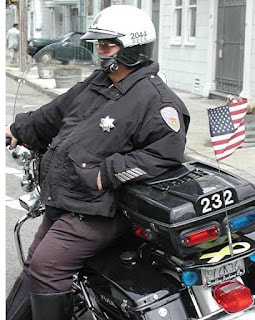 Have you encountered organizations with authority structures that don’t quite match the training and status of the people holding each position? They are more frequent than you might think. Engineers and scientists doing research and development often work in teams and departments headed by managers who know much less than they do. Waiters in restaurants want their orders to arrive on time but are at the mercy of the cooks. And importantly for this blog post, police officers have years of training and experience but are moved around by dispatchers who receive all the calls for help (911 calls, if they are in the USA) but have much less training and status. So, are there any problems when the authority and status do not match? This was the question Arvind Karunakaran explored in a paper recently published in Administrative Science Quarterly. As you might expect, the main problem is that the higher-status workers who have lower ranking in the organization (at least for a specific function) often feel free to ignore instructions or even orders from lower-status superiors. That sounds strange when the workers are police officers who are in uniform, need others to comply with their own orders, and are supposed to be highly disciplined. Why do they ignore instruction? First of all, they think the dispatchers do not understand their work well enough, so they resent being told how and when to work. Also, the dispatchers often keep the officers busier than they would like to be, so officers may be interested in taking a break or not responding to dispatch calls that sounds unimportant. Indeed, not responding to dispatch calls over the radio is a common way for officers to avoid complying with orders. How can an organization handle this type of situation, where the low-status superiors give instructions that sometimes get ignored by high-status workers? The research on police officers gave some useful lessons. First, organizations often have discipline procedures that allow immediate supervisors to refer problems upwards to higher-level managers. The dispatchers did that sometimes, and the results were… not much change. So at least for police officers, this conventional approach seems to be ineffective in the long run. Second, people often use social approaches, such as trying to build a personal connection and using informal pressure in addition to the formal commands. Dispatchers could do that, and it was especially easy because they could choose to communicate more or less formally: to use the formal shared radio channel or a direct private channel. The results of the informal approach were… not much change. That didn’t work in the long run either. So, what did work? One simple trick that dispatchers used was to talk to the non-responding officer informally, often with some humor, and to do it over the formal shared channel. When that was done, often other officers would join in, and the non-responding officer would end up responding and complying with orders both at that moment and going forward. So that worked. The most interesting part of this research is why it worked. Informal talk over a shared channel could be heard by other officers with the same status and rank as the non-responding one. They would join in the chat to tease the officer but also implicitly to pressure the officer to respond. Coworkers often do so, because seeing someone else ignore instructions often means that they are slacking off, which can mean more work for others or ultimately that the non-responding team member is not reliable. People are usually sensitive to such problems, and same-status coworkers like the fellow officers can put pressure on more effectively than lower-status workers such as the dispatchers. As always, peer pressure wins the day. Karunakaran A. 2021. Status–Authority Asymmetry between Professions: The Case of 911 Dispatchers and Police Officers. Administrative Science Quarterly forthcoming. Comments are closed.
|
Blog's objectiveThis blog is devoted to discussions of how events in the news illustrate organizational research and can be explained by organizational theory. It is only updated when I have time to spare. Archives
January 2024
Categories |
 RSS Feed
RSS Feed